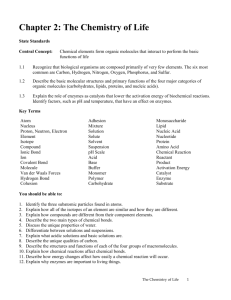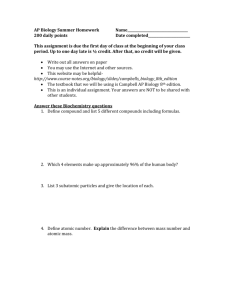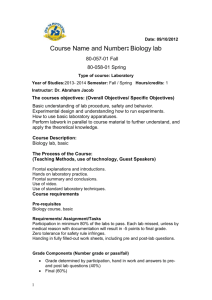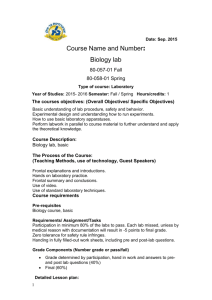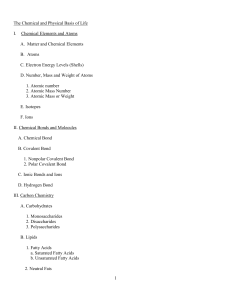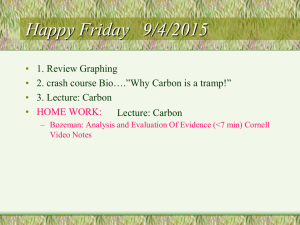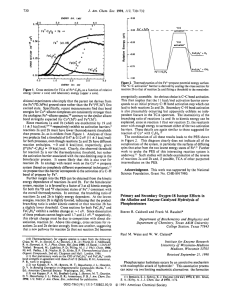Sem 1 Unit 1 Inquiry, Biochemistry & Enzymes
advertisement
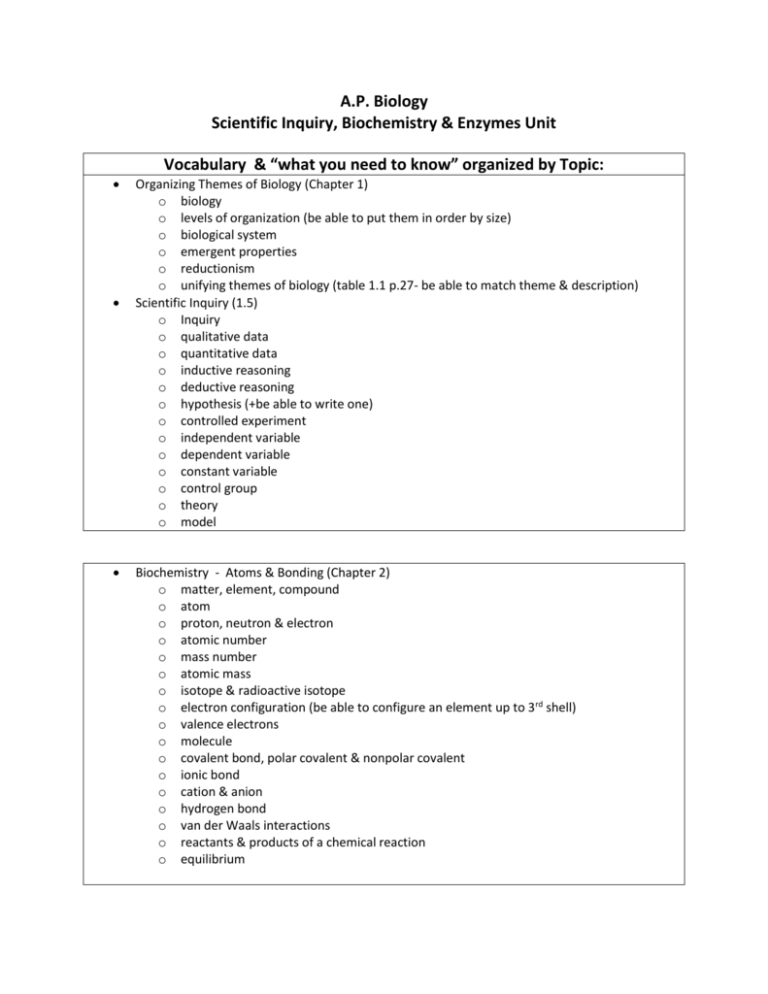
A.P. Biology Scientific Inquiry, Biochemistry & Enzymes Unit Vocabulary & “what you need to know” organized by Topic: Organizing Themes of Biology (Chapter 1) o biology o levels of organization (be able to put them in order by size) o biological system o emergent properties o reductionism o unifying themes of biology (table 1.1 p.27- be able to match theme & description) Scientific Inquiry (1.5) o Inquiry o qualitative data o quantitative data o inductive reasoning o deductive reasoning o hypothesis (+be able to write one) o controlled experiment o independent variable o dependent variable o constant variable o control group o theory o model Biochemistry - Atoms & Bonding (Chapter 2) o matter, element, compound o atom o proton, neutron & electron o atomic number o mass number o atomic mass o isotope & radioactive isotope o electron configuration (be able to configure an element up to 3rd shell) o valence electrons o molecule o covalent bond, polar covalent & nonpolar covalent o ionic bond o cation & anion o hydrogen bond o van der Waals interactions o reactants & products of a chemical reaction o equilibrium o o o Properties & Biological Importance of Water (Chapter 3) polar molecule Know the four emergent properties of water & their significance cohesion adhesion surface tension kinetic energy heat temperature specific heat Celsius scale calorie (cal) kilocalorie (kcal) joule heat of vaporization evaporative cooling solution & aqueous solution solvent & solute hydration shell hydrophilic & hydrophobic molecular mass, mole (mol), Molarity Acids, Bases & Buffers (3.3) hydrogen ion hydroxide ion pH acid base pH scale (be able to use it, know neutral & which end is acid/base) buffers Acid precipitation Carbon’s Role in Molecular Diversity (Chapter 4) Organic chemistry formation of carbon bonds hydrocarbons isomers structural isomers geometric isomers enantiomers functional groups ATP o Structure & Function of Macromolecules (Chapter 5) macromolecule polymer monomer hydrolysis condensation & dehydration reactions carbohydrates monosaccharide, disaccharide, polysaccharide starch, glycogen, cellulose fat, fatty acid (saturated & unsaturated) phospholipid steroid cholesterol enzymes catalysts amino acids, polypeptides, proteins & peptide bonds four levels of protein structure denaturation & renaturation of a protein chaperonin nucleic acids, DNA & RNA polynucleotides & nucleotides purines & pyrimidines double helix antiparallel Metabolism, Energy & Enzymes (Chapter 8) o metabolic pathway, catabolic & anabolic pathways o kinetic & thermal energy, potential energy, chemical energy o thermodynamics (know the laws of thermodynamics) o entropy o free energy (be able to use the equation for free energy) o exergonic & endergonic reactions o energy coupling o structure & hydrolysis of ATP o phosphorylated o catalyst, enzyme o free energy of activation (or activation energy) & how enzymes affect it o substrate, enzyme-substrate complex, active site, induced fit o effects of temperature, pH, cofactors (& coenzymes), inhibitors (competitive & noncompetitive) o allosteric regulation o coopertivity o feedback inhibition


